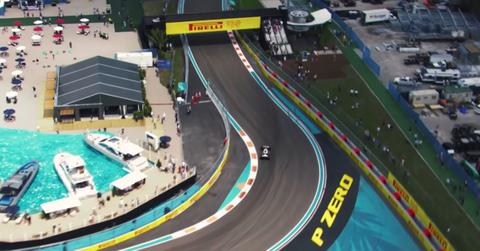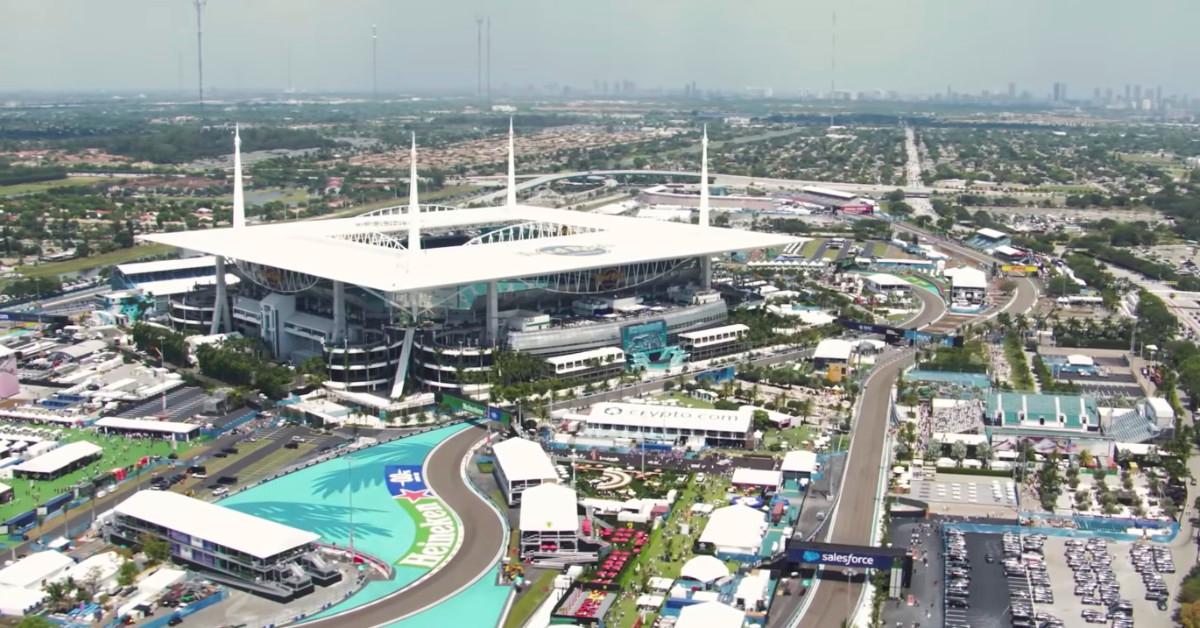The Miami Grand Prix Track Is Designed to Thrill Formula 1 Fans
Published May 7 2022, 11:57 a.m. ET
As Formula 1 racers gear up for the inaugural 2022 Miami Grand Prix tomorrow, Sunday, May 8, racing fans have questions about the new Miami International Autodrome. Namely, is the Miami F1 track permanent?
The answer is yes… and no! The track surface is “a temporary circuit, but one designed to have a permanent feel,” according to Formula 1’s website. Some elements, including the track surface, will stay in place for next year’s race. Other elements, meanwhile, will make way for football fans. Read on…
The Autodrome’s track and infrastructure is permanent — everything else can be removed.
After landing the Grand Prix race in April 2021, organizers in Miami worked to transform the Miami Dolphins’ Hard Rock Stadium into a Formula 1 venue. A major challenge was that the nine-month construction project had to run concurrent with Dolphins and University of Miami football games, the Orange Bowl semifinal, the Miami Open, and other events, as USA Today reports.
Developers considered 36 layouts before settling on the 5.41-kilometer layout that now wends it way through the stadium campus. The track — made of asphalt, limestone, and granite — is permanent. At other times of the year, sections of this “hybrid” track will be used for the Florida Turnpike and for concert and football game parking, according to MotorTrend.
The race tower, pit garages, and underground infrastructure are also permanent, ready for next year’s Grand Prix, according to USA Today.
Everything else, though, can be removed after Sunday’s race, including the 2,870 Geobrugg blocks that provide concrete barriers along the track.
The Miami track is a “street-track spectacular.”
Formula 1 calls the Miami International Autodrome track “a thrilling, 19-turn lap” and a “street-track spectacular” that is similar to Albert Park in Melbourne, Australia, the site of the Australian Grand Prix. The Miami layout boasts 19 corners, three straightaways, three drag reduction zones, and multiple elevation changes — including an overpasses and underpasses.
The track starts next to Hard Rock Stadium and then passes the Dolphins’ practice facility and the MIA Marina and Yacht club, which has yachts perched on a plywood platform designed to look like Biscayne Bay waters. Next up are segments that run under a gondola system and next to the Hard Rock Beach Club, which features swimming pools and cabanas and a concert stage for Grand Prix performers like Maluma and Post Malone. And the most challenging segment passes under the Florida Turnpike.
Organizers estimate drivers will hit a top speed of 320 kilometers per hour — close to 200 miles per hour — as they navigate 57 laps for a total race distance of 308.3 kilometers, or 191.6 miles.
And organizers anticipate that the F1 race will bring in hundreds of millions of dollars to Miami as racing fans head to the Sunshine State for the city’s inaugural Grand Prix.
“It’s a big, brave thing to do to start something so big that it makes the Super Bowl look tiny,” Apex Circuit Design owner Clive Bowen, lead designer of the Miami track, told USA Today. “[The] Super Bowl is America’s biggest sporting event, and it’s contained within a stadium. Every single square inch of this property here has an activation on it. And wherever you look, there’s something to entertain.”

